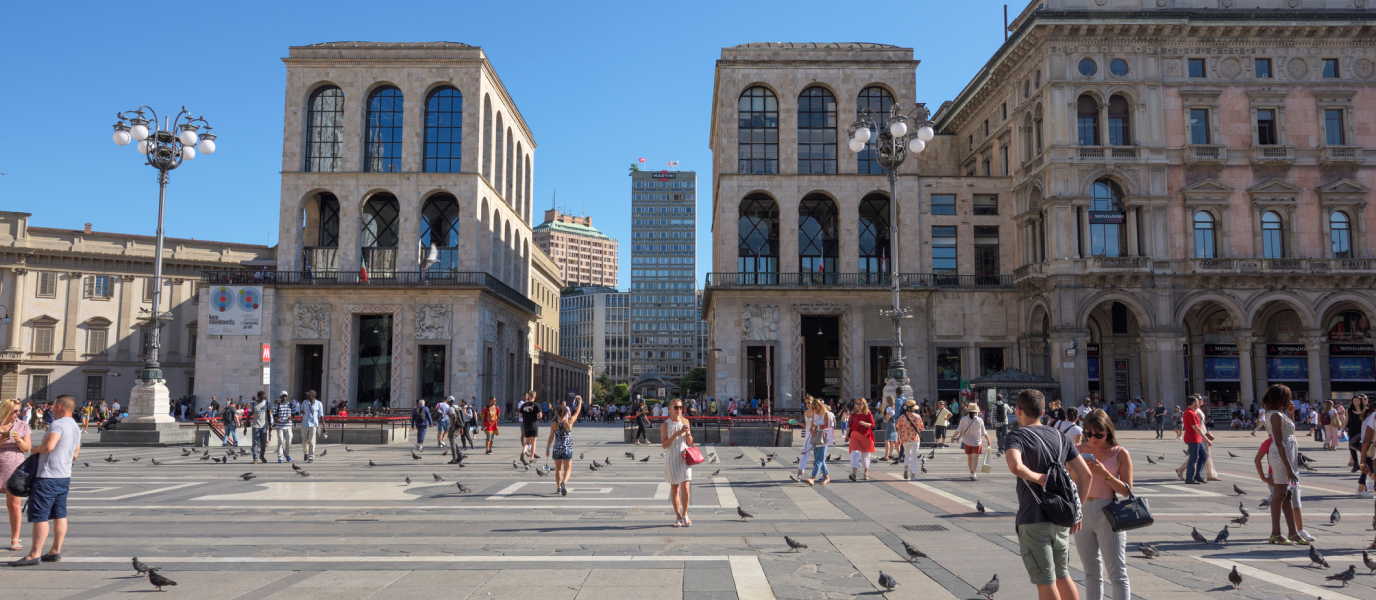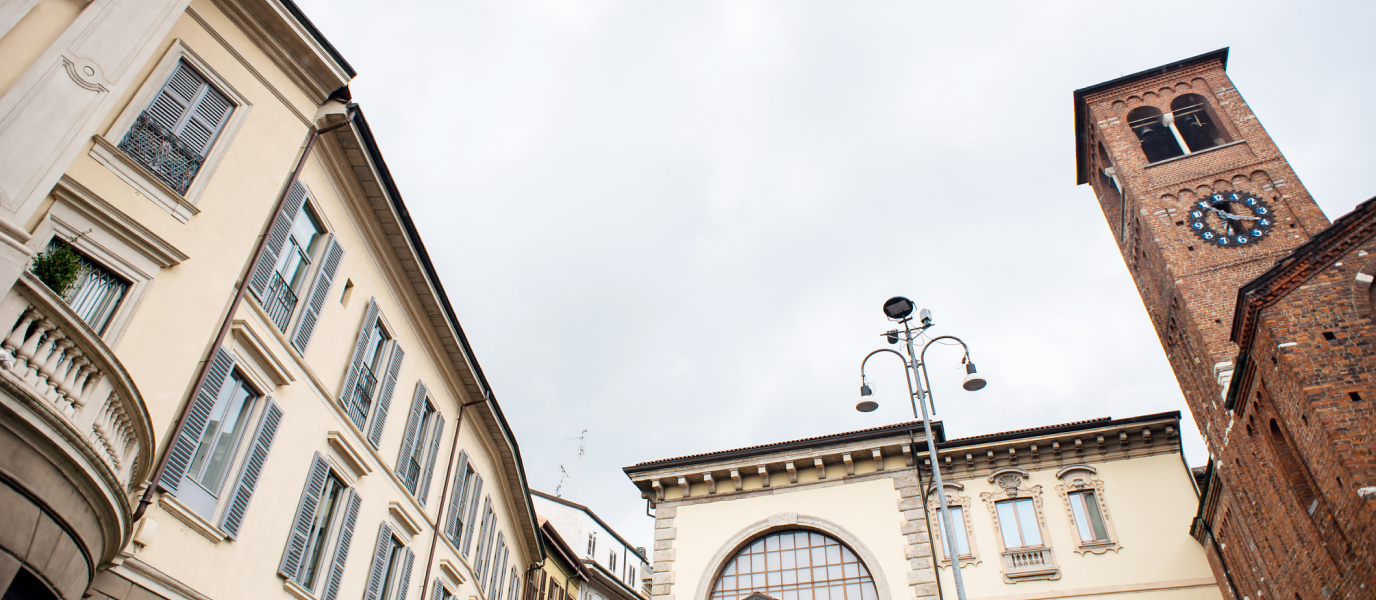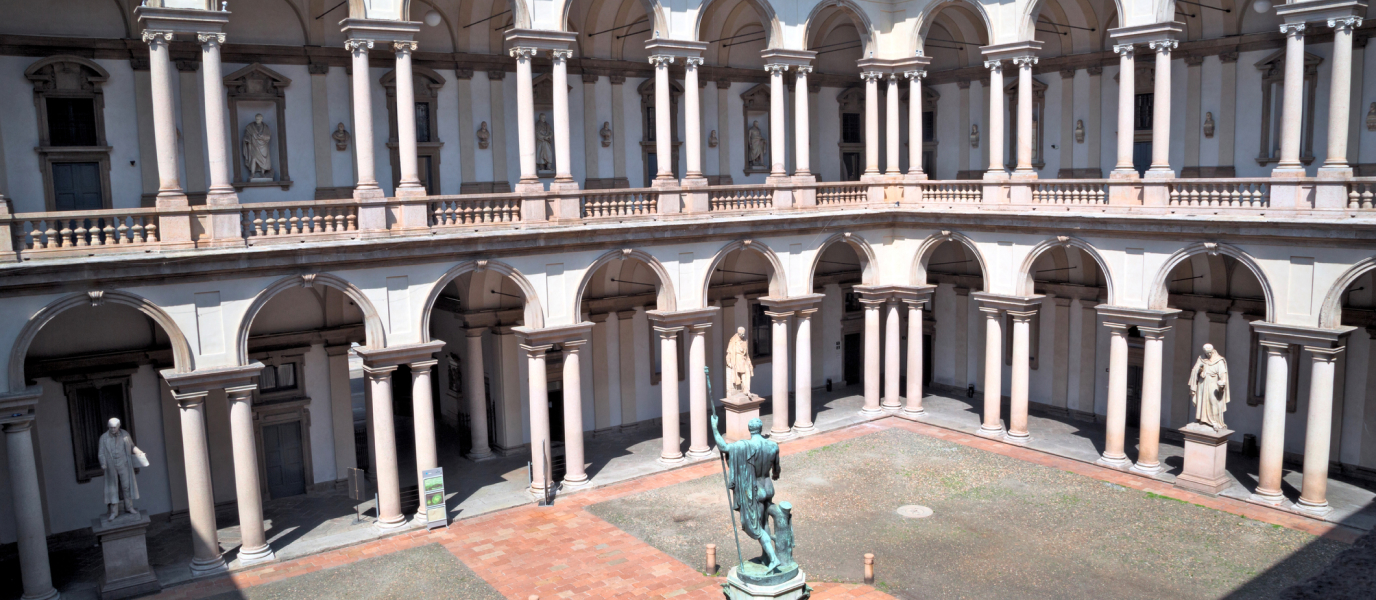The Poldi Pezzoli Museum is an art gallery in Milan that is less well-known by the general public but has an extraordinary collection of works. It contains the fascinating bequest of collector and aristocrat Gian Giacomo Poldi Pezzoli (1822-1879) and features masterpieces by the old masters, including Michelangelo, Filippo Lippi, Andrea Mantegna, Bellini, Piero della Francesca, Raphael, Canaletto, Tiepolo and Botticelli. It also contains Renaissance keepsakes and remarkable furniture.
It’s definitely worth visiting the room of clocks that were donated by Bruno Falk and Piero Portaluppi, while literature fans mustn’t miss the space dedicated to Dante, which is a real treasure. The museum is housed in a lovely 17th century palace in the centre of Milan, close to the Teatro alla Scala.
Origins of the Poldi Pezzoli Museum
To understand who Gian Giacomo Poldi Pezzoli was, it’s important to look first to his mother, Rosa Trivulzio, who had to care for him when he was young after the death of her husband. She was the daughter of Prince Gian Giacomo Trivulzio, a great admirer of literature and poetry who socialised with writers of the period such as Vincenzo Monti and Giuseppe Parini. In his youth, Gian Giacomo Poldi Pezzoli grew up surrounded by men and women of letters, and lovers of culture and the arts.
When he inherited at the age of 24, Poldi Pezzoli had already been instilled with a love of art by his mother. Shortly afterwards, the young aristocrat gave his support for the 1848 revolution; this meant he was forced into exile and his assets were confiscated by the Austrian government. Austrian repression forced him to move to Europe, which gave him the chance to meet other international collectors, soak up European art and visit the first universal exhibitions. In London, he was fascinated by the space that would later become the Victoria & Albert Museum. Poldi Pezzoli began to accumulate paintings and other works of art, such as weapons, ceramics, rugs, archaeology, gold and silverwork, etc. This was probably when he bought the largest 16th century Persian rug in the world, today in the Poldi Pezzoli Museum.
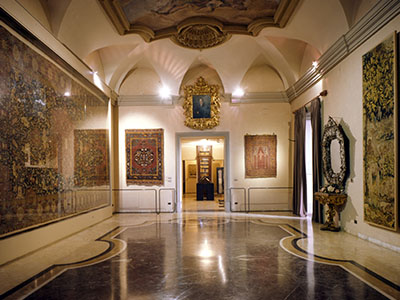
On his return to Milan, he recovered the family home and lived there for the rest of his life, surrounded by wonderful pieces of art and valuable objects. During this time, he hired cabinetmakers, painters and scenographers to decorate his home as if it were a theatre stage; each room had a different design to best present the pieces that would be displayed there.
The Golden Room at the Poldi Pezzoli Museum
The most visited rooms at the museum are the Armoury, designed by sculptor Arnaldo Pomodoro, and the Golden Room, which displays this unusual museum’s greatest masterpieces, including the Pietà by Botticelli and the Portrait of a Lady by Antonio Pollaiolo, an emblem of the institution. Here you’ll also find a Virgin and Child by Mantegna, Ecce Homo by Bellini and works by Piero della Francesca and Botticelli. The room has wonderful views of the rear garden of this lovely building, which has rooms decorated in varying styles from the Trecento to the Baroque.
Its unique decoration has inspired other house–museums, such as those belonging to American Isabella Stewart Gardner in Boston, and French couple Nelly Jacquemart and Edouard André.
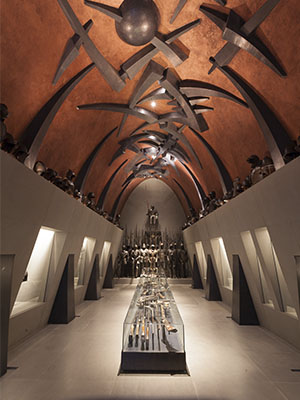
A museum for the ‘benefit of the public’
When Poldi Pezzoli died in 1879 aged 57, he left his two-storey house and collection to the Pinacoteca di Brera (internal link). Its director, Giuseppe Bertini, prepared the Poldi Pezzoli Museum for its official opening in 1881. In his will, the aristocrat wrote that his house should be converted into a museum for “the use and benefit of the public, in perpetuity.”
During the Second World War, the Poldi Pezzoli Museum was irreparably damaged but the collection was unharmed because it had been evacuated before the bombing. However, the windows, stucco and sculptures were completely destroyed; some pieces have been rebuilt following the originals. The museum reopened in 1951.
During the second half of the 20th century, the Poldi Pezzoli Museum has welcomed important bequests from significant collections covering everything from textiles to clocks and paintings.
In the heart of Milan
The Poldi Pezzoli Museum is in the heart of Milan, just moments from the Galleria Vittorio Emanuele II, the Pinacoteca di Brera, Milan Cathedral, and Piazza Mercanti. It’s also close to Via Montenapoleone, so if you have some free time, head here to enjoy the smartest and most exclusive shops in the city.
And finally, there’s an interesting story to be told about the Poldi Pezzoli Museum… Apparently aristocrat Gian Giacomo had the unusual idea of calling a smoking strike when the Austrians invaded the city, persuading the inhabitants of Milan not to buy tobacco or lottery tickets to cause serious financial damage to the Austrian Treasury’s coffers.
USEFUL INFORMATION:
Address: Via Alessandro Manzoni, 12
Telephone: 02 79 63 34
Website: www.museopoldipezzoli.it
Opening hours: Open every day, except Tuesdays, from 10 a.m. to 6 p.m. On Monday entry is combined with the Scala Museum.
How to get to the Poldi Pezzoli Museum:
By metro Montenapoleone station (line M3)
By tram Manzoni Croce Rossa stop (lines 1 and 2)
By bus. Routes 61 and 94





































































